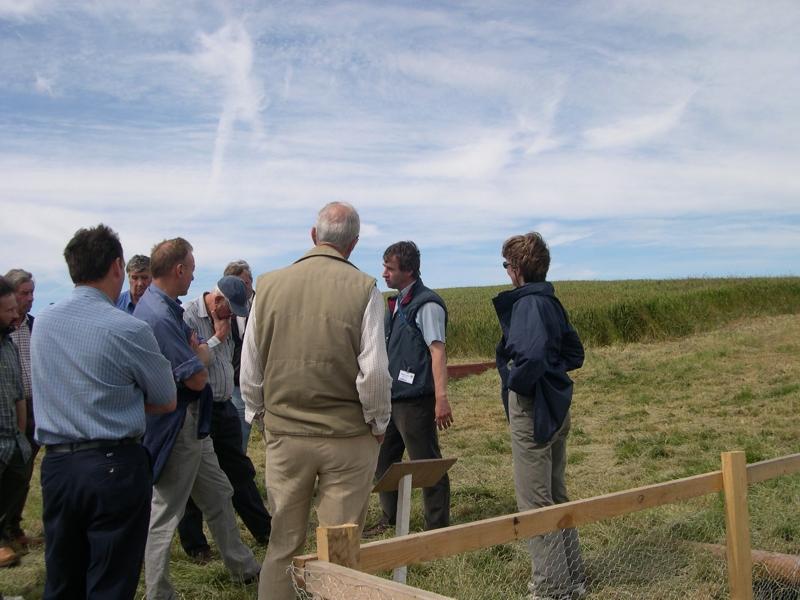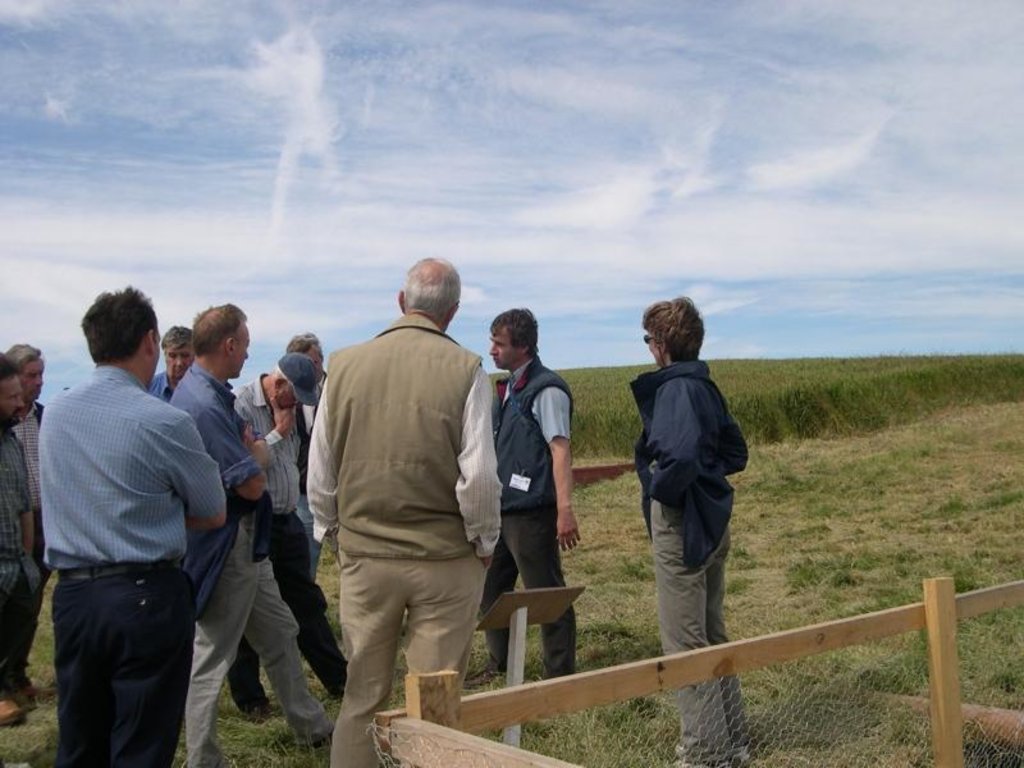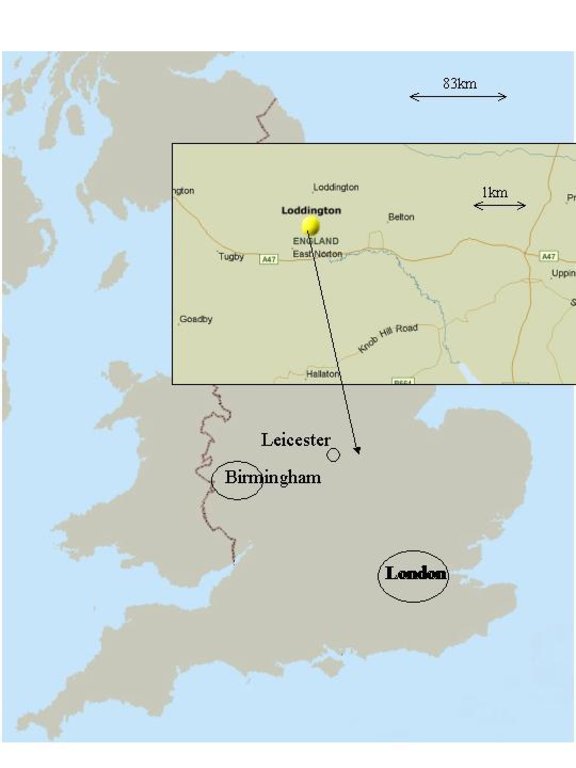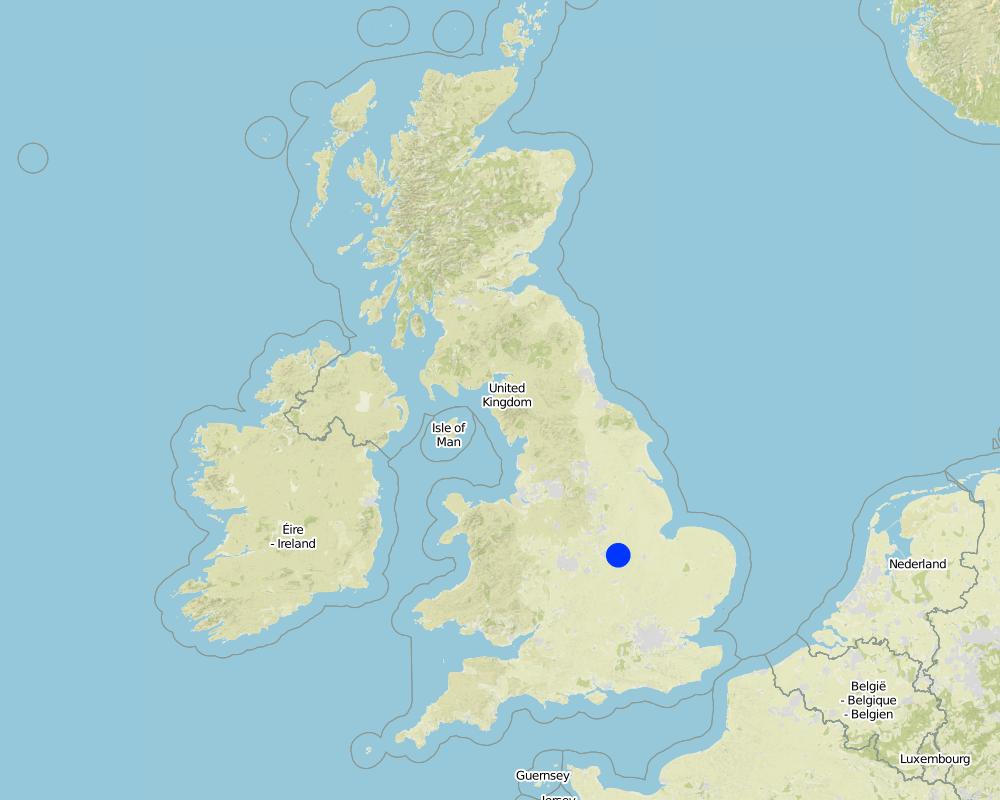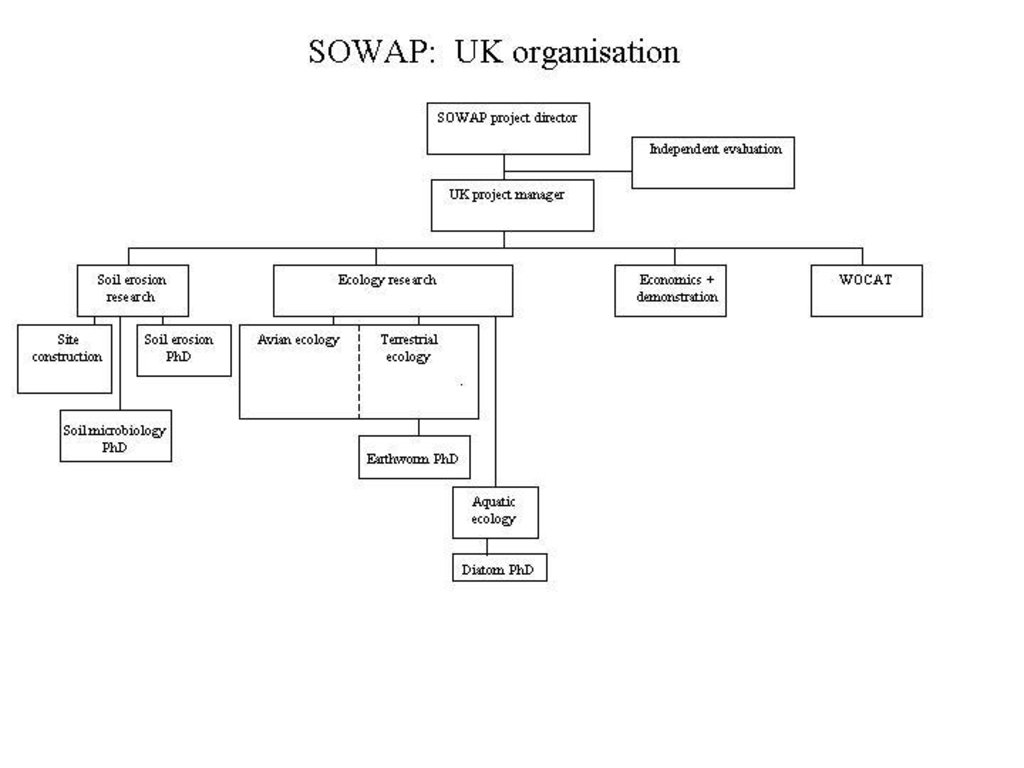Participatory on-farm demonstration in UK arable cropping: Loddington [United Kingdom]
- Creation:
- Update:
- Compiler: Ceris A. Jones
- Editor: –
- Reviewer: Fabian Ottiger
approaches_2639 - United Kingdom
View sections
Expand all Collapse all1. General information
1.2 Contact details of resource persons and institutions involved in the assessment and documentation of the Approach
SLM specialist:
Name of the institution(s) which facilitated the documentation/ evaluation of the Approach (if relevant)
SOWAP (SOWAP) - Hungary1.3 Conditions regarding the use of data documented through WOCAT
The compiler and key resource person(s) accept the conditions regarding the use of data documented through WOCAT:
Ja
1.4 Reference(s) to Questionnaire(s) on SLM Technologies
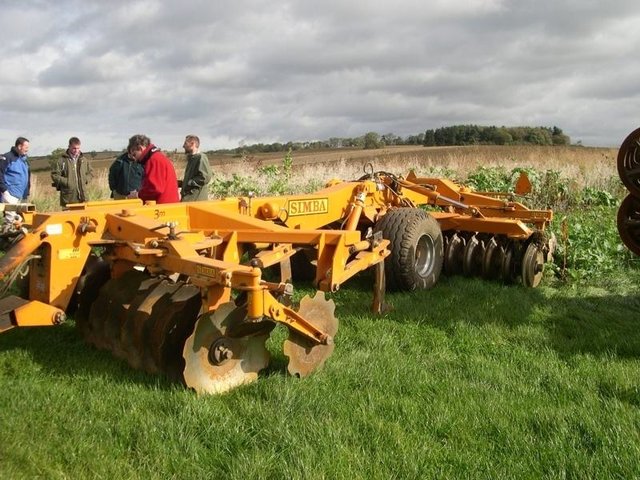
Non-inversion tillage in UK arable cropping; Loddington [United Kingdom]
Surface cultivation of the top 10cm of soil but not complete inversion
- Compiler: Ceris A. Jones
2. Description of the SLM Approach
2.1 Short description of the Approach
Provision of expert knowledge in appropriating equipment and setting up small scale on farm trials in collaboration with the land manager
2.2 Detailed description of the Approach
Detailed description of the Approach:
Aims / objectives: To enable farmer to improve economic viability of his operations and maintaining rural employment by increasing area under cultivation; to improve soil management and reduce erosion.
Methods: Presentation of technical and economic case to farmer; frequent discussions and field visits.
Stages of implementation: Purchase of appropriate cultivator drill enabled trials to begin.
Role of stakeholders: Farmer initiative in setting up a joint venture with neighbouring farm to enable purchse of equipment; SWC specialist using industry contacts to appropriate cultivator and using experience to solve problems and set up appropriate trials.
2.3 Photos of the Approach
2.5 Country/ region/ locations where the Approach has been applied
Country:
United Kingdom
Region/ State/ Province:
Leicestershire
Map
×2.6 Dates of initiation and termination of the Approach
Indicate year of initiation:
2001
2.8 Main aims/ objectives of the Approach
The Approach focused mainly on other activities than SLM (speed and cost of crop establishment)
To overcome the financial, social and technical constraints listed in 2.1.3.3
The SLM Approach addressed the following problems: Technical problems: weed control, low work rate. Social problems: insufficient awareness of environmental benefits of SWC and incoming regulation, low level of confidence to try new techniques, getting farmer to won his own (erosion) problem
2.9 Conditions enabling or hindering implementation of the Technology/ Technologies applied under the Approach
social/ cultural/ religious norms and values
- hindering
traditional conservatism, perceptions, pride in a 'tidy' field
Treatment through the SLM Approach: discussion and demonstration
availability/ access to financial resources and services
- hindering
cost of implementing new technology
Treatment through the SLM Approach: presentation of economic case
knowledge about SLM, access to technical support
- hindering
dealing with trash and weed management; conflicting advice from many sources; management of cover crop
Treatment through the SLM Approach: sharing risks and responsibility; input of expertise
3. Participation and roles of stakeholders involved
3.1 Stakeholders involved in the Approach and their roles
- local land users/ local communities
Working land users were mainly men (This is a single farm but the farmer now co-farms with a neighbour)
- SLM specialists/ agricultural advisers
- NGO
SOWAP team members
- national government (planners, decision-makers)
- international organization
- General population
3.2 Involvement of local land users/ local communities in the different phases of the Approach
| Involvement of local land users/ local communities | Specify who was involved and describe activities | |
|---|---|---|
| initiation/ motivation | none | |
| planning | none | |
| implementation | none | |
| monitoring/ evaluation | none | |
| Research | none |
3.3 Flow chart (if available)
3.4 Decision-making on the selection of SLM Technology/ Technologies
Specify who decided on the selection of the Technology/ Technologies to be implemented:
- mainly land users, supported by SLM specialists
Explain:
Input by specialist and farm management company
Decisions on the method of implementing the SLM Technology were made by mainly by land users supported by SLM specialists. Land manager needed to be comfortable with the decisions made
4. Technical support, capacity building, and knowledge management
4.1 Capacity building/ training
Was training provided to land users/ other stakeholders?
Ja
Form of training:
- on-the-job
- farmer-to-farmer
- demonstration areas
- public meetings
Subjects covered:
soil management, impacts on water and biodiversity
4.3 Institution strengthening (organizational development)
Have institutions been established or strengthened through the Approach?
- no
4.4 Monitoring and evaluation
Is monitoring and evaluation part of the Approach?
Ja
Comments:
bio-physical aspects were regular monitored through measurements
technical aspects were regular monitored through measurements
economic / production aspects were ad hoc monitored through measurements
no. of land users involved aspects were ad hoc monitored through measurements
There were no changes in the Approach as a result of monitoring and evaluation
4.5 Research
Was research part of the Approach?
Ja
Specify topics:
- economics / marketing
- ecology
- technology
Give further details and indicate who did the research:
Yields and gross margins; effects on biodiversity especially birds; rate of technology uptake
Research was carried out on-farm
5. Financing and external material support
5.2 Financial/ material support provided to land users
Did land users receive financial/ material support for implementing the Technology/ Technologies?
Ja
5.3 Subsidies for specific inputs (including labour)
If labour by land users was a substantial input, was it:
- paid in cash
5.4 Credit
Was credit provided under the Approach for SLM activities?
Nee
6. Impact analysis and concluding statements
6.1 Impacts of the Approach
Did the Approach help land users to implement and maintain SLM Technologies?
- No
- Yes, little
- Yes, moderately
- Yes, greatly
Did other land users / projects adopt the Approach?
- No
- Yes, little
- Yes, moderately
- Yes, greatly
6.3 Sustainability of Approach activities
Can the land users sustain what has been implemented through the Approach (without external support)?
- uncertain
If no or uncertain, specify and comment:
Technical difficulties that may arise e.g. weed management, soil compaction, will require expert input and expertise from different areas
6.4 Strengths/ advantages of the Approach
| Strengths/ advantages/ opportunities in the land user’s view |
|---|
| opportunity to expand knowledge and transfer that to other farmers |
| greater confidence |
| Strengths/ advantages/ opportunities in the compiler’s or other key resource person’s view |
|---|
| improved motivation (How to sustain/ enhance this strength: continued support, technical advice and recognition of farmer's achievement) |
| improved education and awareness (How to sustain/ enhance this strength: continued support, technical advice and recognition of farmer's achievement) |
| greater confidence |
| improved problem solving capabilities |
6.5 Weaknesses/ disadvantages of the Approach and ways of overcoming them
| Weaknesses/ disadvantages/ risks in the compiler’s or other key resource person’s view | How can they be overcome? |
|---|---|
| dependent on personalities i.e. with a more conservative farmer, this approach would be unsuccessful |
7. References and links
7.1 Methods/ sources of information
- field visits, field surveys
- interviews with land users
Links and modules
Expand all Collapse allLinks

Non-inversion tillage in UK arable cropping; Loddington [United Kingdom]
Surface cultivation of the top 10cm of soil but not complete inversion
- Compiler: Ceris A. Jones
Modules
No modules


